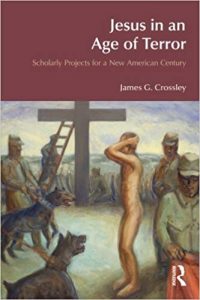Há novas indicações bibliográficas em + Novidades. Foram acrescentadas nos últimos dois dias. Os links para as obras, apresentações e resenhas estão na página + Novidades.
Porém: as indicações bibliográficas estão agora, 2019, em Bibliografia.
Recomendo:
:: 2006
MOORE, M. Philosophy and Practice in Writing a History of Ancient Israel. London: T &T Clark, 2006, x + 205 p. – ISBN 9780567029812 (Hardcover) – Paperback: 2009, 240 p. – ISBN 9780567109897. Leia mais em Quatro livros sobre Bíblia que valem a leitura.
:: 2007
ZETTERHOLM, M. (ed.) The Messiah in Early Judaism and Christianity. Minneapolis: Fortress, 2007, xxvii + 163 p. – ISBN 9780800621087. Leia a resenha escrita por James H. Charlesworth na RBL em 28/06/2008.
DeCONICK, A. D. The Thirteenth Apostle: What the Gospel of Judas Really Says. London: Continuum, 2007, 224 p. – ISBN 9780826499646 (Hardcover). Paperback: 2009, 224 p. – ISBN 9781847065681. Leia mais em The Forbidden Gospels Blog e em April D. DeConick.
:: 2008
HILHORST, A.; PUECH, E.; TIGCHELAAR, E. (eds.) Flores Florentino: Dead Sea Scrolls and Other Early Jewish Studies in Honour of Florentino García Martínez. Leiden: Brill, 2008, 836 p. – ISBN 9789004162921.
CHARLESWORTH, J. H. The Historical Jesus: An Essential Guide. Nashville: Abingdon Press, 2008, xx + 131 p. – ISBN 9780687021673. Resenha escrita por Peter J. Judge e publicada na RBL em 21/02/2009.
:: 2009
ZETTERHOLM, M. Approaches to Paul: A Student’s Guide to Recent Scholarship. Minneapolis: Fortress, 2009, 288 p. ISBN 9780800663377. Publicação prevista para maio de 2009.
ORTIZ, P. Dicionário do grego do Novo Testamento. Traduzido do espanhol. São Paulo: Loyola, 2009, 304 p. – ISBN 9788515036080. Obra da Coleção Ferramentas Bíblicas.
MCKNIGHT, S.; MOURNET, T. C. (eds.) Jesus in Early Christian Memory: Essays in Honour of James D. G. Dunn. London: T & T Clark, 2009, 224 p. – ISBN 9780567045249. Lançamento previsto para maio de 2009.
CASEY, M. The Solution to the ‘Son of Man’ Problem. London: T & T Clark, 2009, 416 p. – ISBN 9780567030702 (Paperback). Hardcover: 2007, xiv + 359 p. – ISBN 9780567030696. Resenhado por Paul Owen, RBL, 09/02/2009.


